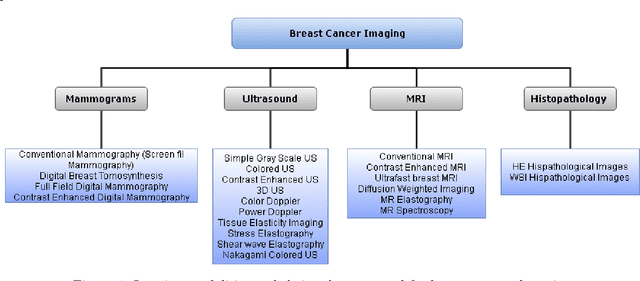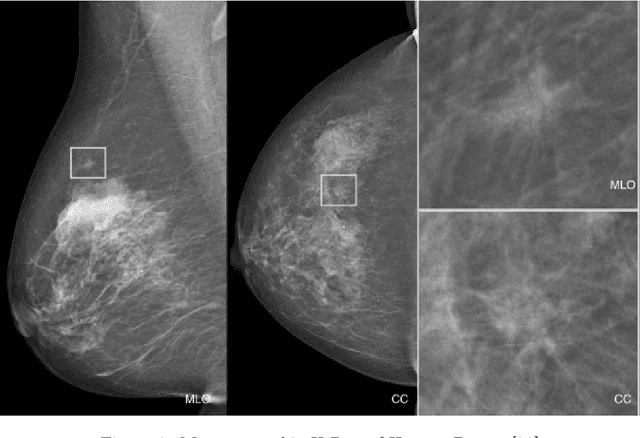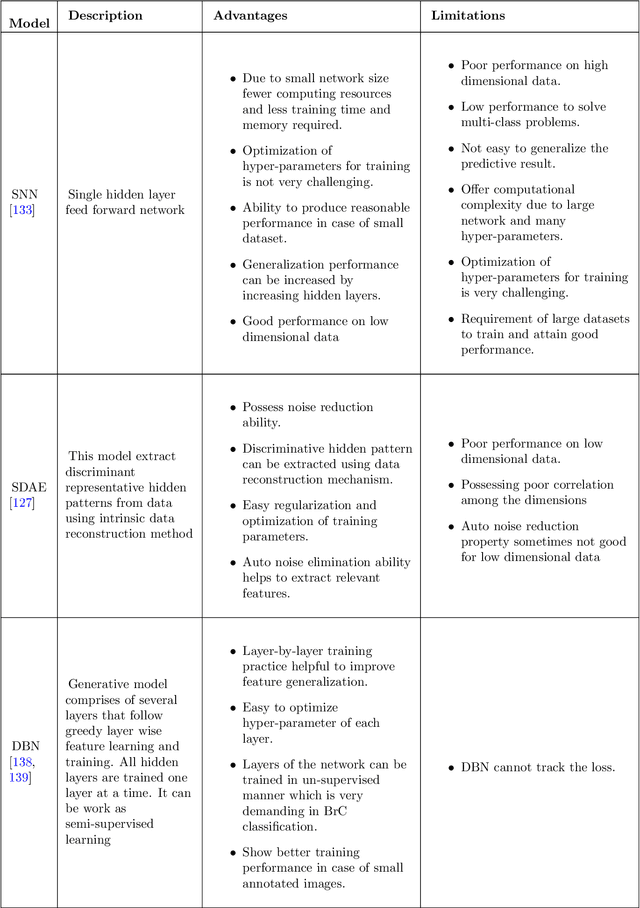Unaiza Sajid
Breast Cancer Classification using Deep Learned Features Boosted with Handcrafted Features
Jun 26, 2022



Abstract:Breast cancer is one of the leading causes of death among women across the globe. It is difficult to treat if detected at advanced stages, however, early detection can significantly increase chances of survival and improves lives of millions of women. Given the widespread prevalence of breast cancer, it is of utmost importance for the research community to come up with the framework for early detection, classification and diagnosis. Artificial intelligence research community in coordination with medical practitioners are developing such frameworks to automate the task of detection. With the surge in research activities coupled with availability of large datasets and enhanced computational powers, it expected that AI framework results will help even more clinicians in making correct predictions. In this article, a novel framework for classification of breast cancer using mammograms is proposed. The proposed framework combines robust features extracted from novel Convolutional Neural Network (CNN) features with handcrafted features including HOG (Histogram of Oriented Gradients) and LBP (Local Binary Pattern). The obtained results on CBIS-DDSM dataset exceed state of the art.
Artificial Intelligence For Breast Cancer Detection: Trends & Directions
Oct 03, 2021



Abstract:In the last decade, researchers working in the domain of computer vision and Artificial Intelligence (AI) have beefed up their efforts to come up with the automated framework that not only detects but also identifies stage of breast cancer. The reason for this surge in research activities in this direction are mainly due to advent of robust AI algorithms (deep learning), availability of hardware that can train those robust and complex AI algorithms and accessibility of large enough dataset required for training AI algorithms. Different imaging modalities that have been exploited by researchers to automate the task of breast cancer detection are mammograms, ultrasound, magnetic resonance imaging, histopathological images or any combination of them. This article analyzes these imaging modalities and presents their strengths, limitations and enlists resources from where their datasets can be accessed for research purpose. This article then summarizes AI and computer vision based state-of-the-art methods proposed in the last decade, to detect breast cancer using various imaging modalities. Generally, in this article we have focused on to review frameworks that have reported results using mammograms as it is most widely used breast imaging modality that serves as first test that medical practitioners usually prescribe for the detection of breast cancer. Second reason of focusing on mammogram imaging modalities is the availability of its labeled datasets. Datasets availability is one of the most important aspect for the development of AI based frameworks as such algorithms are data hungry and generally quality of dataset affects performance of AI based algorithms. In a nutshell, this research article will act as a primary resource for the research community working in the field of automated breast imaging analysis.
 Add to Chrome
Add to Chrome Add to Firefox
Add to Firefox Add to Edge
Add to Edge